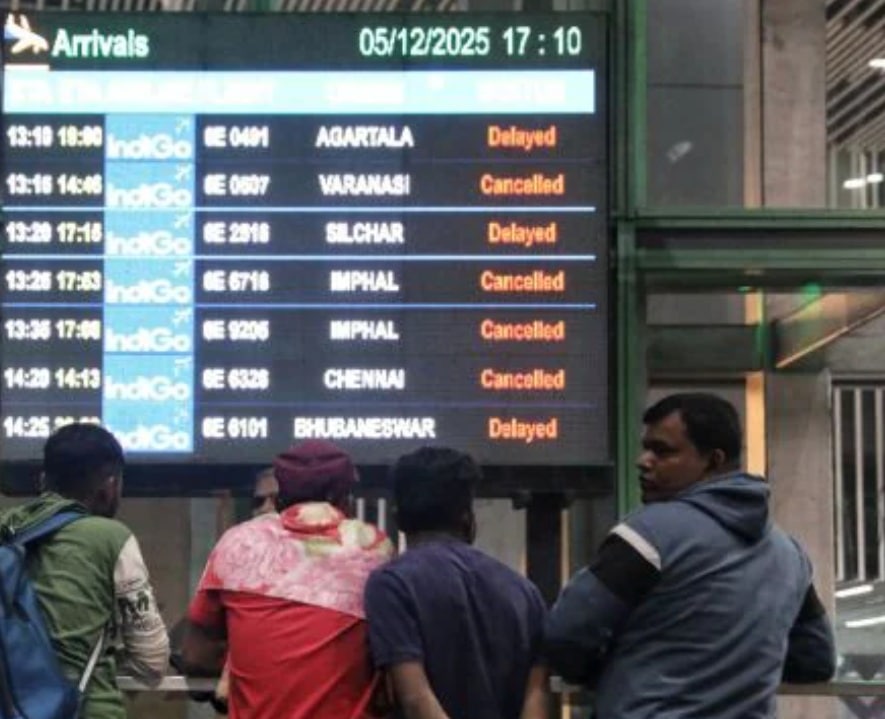What’s in today’s article?
- Why in news?
- What is National Centre for Medium Range Weather Forecasting (NCMRWF)?
- FLOPs in computing
- What are FLOPs in computing?
- How many FLOPs can a computer achieve?
- What is a petaFLOP?
- Are FLOPs the only metric to judge a computer’s performance?
- Is India already using petaFLOPs computers for weather forecasting?
- News Summary: India To Have New Supercomputer For Weather Forecasting By Year end
- Benefits of the new supercomputer
Why in news?
- Union Earth Sciences Minister Kiren Rijiju announced that India will unveil its new 18 petaFLOP supercomputer for weather forecasting institutes later this year.
- The minister made this announcement after a visit to the ministry’s National Centre for Medium Range Weather Forecasting (NCMRWF) in Noida.
What is National Centre for Medium Range Weather Forecasting (NCMRWF)?
- About
- NCMRWF is a Centre of Excellence in Weather and Climate Modelling under the Ministry of Earth Sciences.
- Established in 1988, NCMRWF is located in Noida, Uttar Pradesh, India.
- It serves as the national centre for generating weather forecasts at medium-range timescales, typically up to 10 days in advance.
- Objective
- To provide medium-range weather forecasts and related services to various users, including meteorological departments, government agencies, and other stakeholders.
- Functions
- Apart from medium-range weather forecasting, NCMRWF also conducts research in various areas related to weather and climate.
- This includes studies on monsoon dynamics, severe weather events, climate change, climate modeling, and the development of advanced forecasting techniques and tools.
FLOPs in computing
What are FLOPs in computing?
- FLOPs stands for “Floating Point Operations per Second.”
- It is a measure of computing performance that quantifies the number of floating-point operations a computer system can perform in one second.
- Floating-point operations are a certain kind of mathematical calculation using real numbers with fractional parts.
- It is especially used to measure the performance in the field of high-performance computing (HPC) and artificial intelligence (AI).
How many FLOPs can a computer achieve?
- Modern computing systems, such as CPUs (Central Processing Units) and GPUs (Graphics Processing Units), are designed to perform multiple operations simultaneously, using parallel processing techniques.
- The parallelism significantly increases the number of FLOPs a system can achieve within a given time frame.
- Over the years, hardware has become more efficient, exponentially increasing computing power.
What is a petaFLOP?
- Present-day computers hold significantly great computing powers.
- Thus, the metric of FLOPs is often denoted in giga (billions), tera (trillions), or PETA (quadrillions) of operations per second.
- Metric value of petaFLOP
- A petaFLOP equals a thousand TFLOPs. One can also say that a petaFLOP is equal to 1015 FLOPs.
Are FLOPs the only metric to judge a computer’s performance?
- No. FLOPs is not the only factor determining the performance of a computing system.
- Memory bandwidth, latency, and other architectural features also play significant roles.
- However, FLOPs provide a valuable baseline for comparing the computational capabilities of different systems, especially in tasks where floating-point calculations dominate.
Is India already using petaFLOPs computers for weather forecasting?
- The NCMRWF houses ‘Mihir’, a 2.8 petaflop supercomputer, while the Indian Institute of Tropical Meteorology (IITM), Pune, is home to ‘Pratyush’, a 4.0 petaflop supercomputer.
- These were launched in 2018.
News Summary: India To Have New Supercomputer For Weather Forecasting By Year end
- India is going to launch its brand new 18 petaFLOP supercomputer by the end of year 2023.
- It will be used for weather forecasting institutes in the country.
Benefits of the new supercomputer
- Improved Weather Forecasting
- With its immense computational power, the supercomputer can process vast amounts of meteorological data, enabling more accurate and detailed weather forecasts.
- It can handle complex models and simulations that take into account various atmospheric variables, ocean currents, land features etc., resulting in more reliable predictions.
- The new supercomputer is expected to improve weather forecasts at the block level.
- Early Warning Systems
- By rapidly analyzing real-time data and running high-resolution models, it is expected to predict cyclones with more accuracy and better lead time.
- Lead time is the difference between a phenomenon being forecast and actually occurring.
- Timely and accurate weather information plays a crucial role in disaster management.
- By rapidly analyzing real-time data and running high-resolution models, it is expected to predict cyclones with more accuracy and better lead time.
- Better resolution
- Presently, the existing system give forecasts with a 12-kilometre resolution. The new supercomputer will improve it to six-kilometre resolution.
- The government’s aim is to achieve one-kilometre resolution forecasts.
- Other benefits
- It is expected to provide ocean state forecasts, including marine water quality forecasts.
- It can contribute to climate modelling efforts, enabling scientists to study long-term climate trends, assess the impact of human activities, and explore potential future scenarios.
- Weather conditions greatly influence agricultural productivity. Hence, it will help in agricultural planning.
Q1) What is a supercomputer?
A supercomputer is a type of extremely powerful and high-performance computer system designed to handle complex and demanding computational tasks. It is capable of executing a massive number of calculations per second, far surpassing the capabilities of typical personal computers or even traditional computer clusters.
Q2) What is an early warning system?
An early warning system (EWS) is a system designed to detect and provide timely information about potential or impending threats or hazards, allowing for appropriate actions to be taken to minimize or mitigate their impact. Early warning systems are implemented across various domains, including natural disasters, public health emergencies, security threats, and financial risks.
Source: India will unveil 18 new petaFLOP supercomputers for weather forecasting in 2023: What are FLOPs in computing? | National Centre for Medium Range Weather Forecasting | Economic Times | Outlook
Last updated on November, 2025
→ Check out the latest UPSC Syllabus 2026 here.
→ Join Vajiram & Ravi’s Interview Guidance Programme for expert help to crack your final UPSC stage.
→ UPSC Mains Result 2025 is now out.
→ UPSC Notification 2026 is scheduled to be released on January 14, 2026.
→ UPSC Calendar 2026 is released on 15th May, 2025.
→ The UPSC Vacancy 2025 were released 1129, out of which 979 were for UPSC CSE and remaining 150 are for UPSC IFoS.
→ UPSC Prelims 2026 will be conducted on 24th May, 2026 & UPSC Mains 2026 will be conducted on 21st August 2026.
→ The UPSC Selection Process is of 3 stages-Prelims, Mains and Interview.
→ UPSC Result 2024 is released with latest UPSC Marksheet 2024. Check Now!
→ UPSC Prelims Result 2025 is out now for the CSE held on 25 May 2025.
→ UPSC Toppers List 2024 is released now. Shakti Dubey is UPSC AIR 1 2024 Topper.
→ UPSC Prelims Question Paper 2025 and Unofficial Prelims Answer Key 2025 are available now.
→ UPSC Mains Question Paper 2025 is out for Essay, GS 1, 2, 3 & GS 4.
→ UPSC Mains Indian Language Question Paper 2025 is now out.
→ UPSC Mains Optional Question Paper 2025 is now out.
→ Also check Best IAS Coaching in Delhi

















